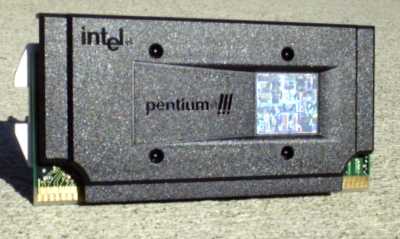Performance Guide: Intel Pentium III
Introduction
Intel's Pentium III is now available for about one year and has already been improved: Last fall Intel introduced the Coppermine core, which comes with 256 kBytes on-die and full-speed second level cache vs. Katmai's 512 kBytes of external half-speed L2 cache. This 'Advanced Transfer Cache' has been integrated into the CPU silicon chip (die), sporting a 256 Bit wide data connection to the processor core which marks another improvement over Katmai's 64 bit wide interface to the external L2 cache. While a Pentium III with Katmai-core was not able to compete against AMD's Athlon processor on a clock-by-clock basis, a Coppermine-PIII gained enough speed from the integrated cache to be pretty much on par with Athlon. The integration of Coppermine's L2-cache was of course only possible because this chip is manufactured in 0.18 µm process, which reduced the die-size of Katmai's core so that the L2-cache could fit onto the same die. Katmai is manufactured in .25 micron process.
Now that Pentium III didn't need external L2-cache modules anymore, Intel was able to supply a socket-version of PIII, which is nowadays called 'FCPGA' for 'Flip Chip Pin Grid Array'. Today Intel wants to move away from the larger and thus more expensive Slot1 version of Pentium III, but currently you can still get Pentium III with Coppermine core in both versions. Let's take a quick look at both different core versions, Katmai as well as Coppermine, of the Pentium III before moving over to the Coppermine-core only.
Get Tom's Hardware's best news and in-depth reviews, straight to your inbox.

Patrick Schmid was the editor-in-chief for Tom's Hardware from 2005 to 2006. He wrote numerous articles on a wide range of hardware topics, including storage, CPUs, and system builds.
